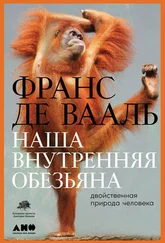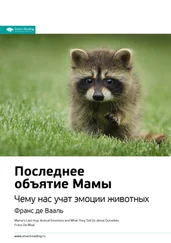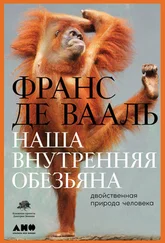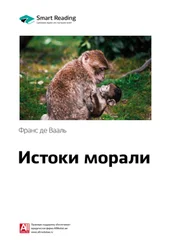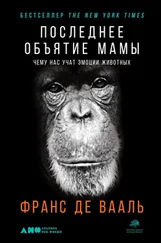de Waal, F. B. M., and J. van Hooff. 1981. Side-directed communication and agonistic interactions in chimpanzees. Behaviour 77:164–98.
Dewsbury, D. A. 2000. Comparative cognition in the 1930s. Psychonomic Bulletin and Review 7:267–83.
–. 2006. Monkey Farm: A History of the Yerkes Laboratories of Primate Biology, Orange Park, Florida, 1930–1965. Lewisburg, PA: Bucknell University Press.
Dindo, M., A. Whiten, and F. B. M. de Waal. 2009. In-group conformity sustains different foraging traditions in capuchin monkeys ( Cebus apella ). Plos ONE 4: e7858.
Dinets, V., J. C. Brueggen, and J. D. Brueggen. 2013. Crocodilians use tools for hunting. Ethology Ecology and Evolution 27:74–78.
Dingfelder, S. D. 2007. Can rats reminisce? Monitor on Psychology 38:26. Domjan, M., and B. G. Galef. 1983. Biological constraints on instrumental and classical conditioning: Retrospect and prospect. Animal Learning and Behavior 11:151–61.
Ducheminsky, N., P. Henzi, and L. Barrett. 2014. Responses of vervet monkeys in large troops to terrestrial and aerial predator alarm calls. Behavioral Ecology 25:1474–84.
Dunbar, R. 1998a. Grooming, Gossip, and the Evolution of Language. Cambridge, MA: Harvard University Press.
–. 1998b. The social brain hypothesis. Evolutionary Anthropology 6:178–90. Emery, N. J., and N. S. Clayton. 2001. Effects of experience and social context on prospective caching strategies by scrub jays. Nature 414:443–46.
–. 2004. The mentality of crows: Convergent evolution of intelligence in corvids and apes. Science 306:1903–7.
Epstein, R. 1987. The spontaneous interconnection of four repertoires of behavior in a pigeon. Journal of Comparative Psychology 101:197–201.
Epstein, R., R. P. Lanza, and B. F. Skinner. 1981. "Self-awareness" in the pigeon. Science 212:695–96.
Evans, T. A., and M. J. Beran. 2007. Chimpanzees use self-distraction to cope with impulsivity. Biology Letters 3:599–602.
Falk, J. L. 1958. The grooming behavior of the chimpanzee as a reinforcer. Journal of the Experimental Analysis of Behavior 1:83–85.
Fehr, E., and U. Fischbacher. 2003. The nature of human altruism. Nature 425:785–91.
Ferris, C. F., et al. 2001. Functional imaging of brain activity in conscious monkeys responding to sexually arousing cues. Neuroreport 12:2231–36.
Finn, J. K., T. Tregenza, and M. D. Norman. 2009. Defensive tool use in a coconut-carrying octopus. Current Biology 19: R1069–70.
Fodor, J. 1975. The Language of Thought. New York: Crowell.
Foerder, P., et al. 2011. Insightful problem solving in an Asian elephant. Plos ONE 6 (8):e23251.
Foote, A. L., and J. D. Crystal. 2007. Metacognition in the rat. Current Biology 17:551–55.
Foster, M. W., et al. 2009. Alpha male chimpanzee grooming patterns: Implications for dominance "style." American Journal of Primatology 71:136–44.
Fragaszy, D. M., E. Visalberghi, and L. M. Fedigan. 2004. The Complete Capuchin: The Biology of the Genus Cebus. Cambridge: Cambridge University Press.
Frankfurt, H. G. 1971. Freedom of the will and the concept of a person. Journal of Philosophy 68:5–20.
Fuhrmann, D., A. Ravignani, S. Marshall-Pescini, and A. Whiten. 2014. Synchrony and motor mimicking in chimpanzee observational learning. Scientific Reports 4:5283.
Gácsi, M., et al. 2009. Explaining dog wolf differences in utilizing human pointing gestures: Selection for synergistic shifts in the development of some social skills. Plos ONE 4: e6584.
Galef, B. G. 1990. The question of animal culture. Human Nature 3:157–78. Gallup, G. G. 1970. Chimpanzees: Self-recognition. Science 167:86–87.
Garcia, J., D. J. Kimeldorf, and R. A. Koelling. 1955. Conditioned aversion to saccharin resulting from exposure to gamma radiation. Science 122:157–58. Gardner, R. A., M. H. Scheel, and H. L. Shaw. 2011. Pygmalion in the laboratory. American Journal of Psychology 124:455–61.
Garstang, M., et al. 2014. Response of African elephants ( Loxodonta africana ) to seasonal changes in rainfall. Plos ONE 9: e108736.
Gaulin, S. J. C., and R. W. Fitzgerald. 1989. Sexual selection for spatial-learning ability. Animal Behaviour 37:322–31.
Geissmann, T., and M. Orgeldinger. 2000. The relationship between duet songs and pair bonds in siamangs, Hylobates syndactylus. Animal Behaviour 60: 805–9. Goodall, J. 1967. My Friends the Wild Chimpanzees. Washington, DC: National
Geographic Society.
–. 1971. In the Shadow of Man. Boston: Houghton Miff lin.
–. 1986. The Chimpanzees of Gombe: Patterns of Behavior. Cambridge, MA: Belknap.
Gould, J. L., and C. G. Gould. 1999. The Animal Mind . New York: W. H. Freeman. Gouzoules, S., H. Gouzoules, and P. Marler. 1984. Rhesus monkey ( Macaca mulatta ) screams: Representational signaling in the recruitment of agonistic aid. Animal Behaviour 32:182–93.
Griffin, D. R. 1976. The Question of Animal Awareness: Evolutionary Continuity of Mental Experience . New York: Rockefeller University Press.
–. 2001. Return to the magic well: Echolocation behavior of bats and responses of insect prey. Bioscience 51:555–56.
Gruber, T., Z. Clay, and K. Zuberbühler. 2010. A comparison of bonobo and chimpanzee tool use: Evidence for a female bias in the Pan lineage. Animal Behaviour 80:1023–33.
Guldberg, H. 2010. Just Another Ape? Exeter, UK: Imprint Academic.
Gumert, M. D., M. Kluck, and S. Malaivijitnond. 2009. The physical characteristics and usage patterns of stone axe and pounding hammers used by long-tailed macaques in the Andaman Sea region of Thailand. American Journal of Primatology 71:594–608.
Günther, M. M., and C. Boesch. 1993. Energetic costs of nut-cracking behaviour in wild chimpanzees. In Hands of Primates, ed. H. Preuschoft and D. J. Chivers, 109–29. Vienna: Springer.
Gupta, A. S., M. A. A. van der Meer, D. S. Touretzky, and A. D. Redish.
2010. Hippocampal replay is not a simple function of experience. Neuron 65:695–705.
Guthrie, E. R., and G. P. Horton. 1946. Cats in a Puzzle Box. New York: Rinehart.
Hall, K., et al. 2014. Using cross correlations to investigate how chimpanzees use conspecific gaze cues to extract and exploit information in a foraging competition. American Journal of Primatology 76:932–41.
Hamilton, G. 2012. Crows can distinguish faces in a crowd. National Wildlife Federation, Nov. 7, http://bit.ly / 1IqkWaN.
Hampton, R. R. 2001. Rhesus monkeys know when they remember. Proceedings of the National Academy of Sciences USA 98:5359–62.
Hampton, R. R., A. Zivin, and E. A. Murray. 2004. Rhesus monkeys ( Macaca mulatta ) discriminate between knowing and not knowing and collect information as needed before acting. Animal Cognition 7:239–54.
Hanlon, R. T. 2007. Cephalopod dynamic camouf lage. Current Biology 17: R400–4.
–. 2013. Camouf laged octopus makes marine biologist scream bloody murder (video). Discover , Sept. 13, http://bit.ly / 1RScdid.
Hanlon, R. T., and J. B. Messenger. 1996. Cephalopod Behaviour . Cambridge: Cambridge University Press.
Hanlon, R. T., J. W. Forsythe, and D. E. Joneschild. 1999. Crypsis, conspicuousness, mimicry and polyphenism as antipredator defences of foraging octopuses on indo-pacific coral reefs, with a method of quantifying crypsis from video tapes. Biological Journal of the Linnean Society 66:1–22.
Читать дальше
Конец ознакомительного отрывка
Купить книгу
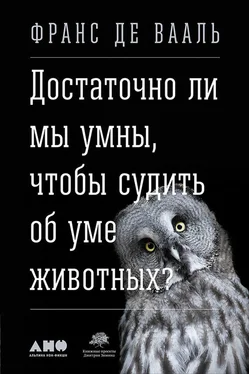
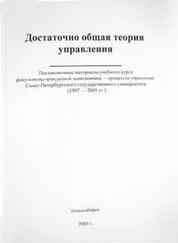



![Франс Вааль - Последнее объятие Мамы [litres]](/books/406055/frans-vaal-poslednee-obyatie-mamy-litres-thumb.webp)

